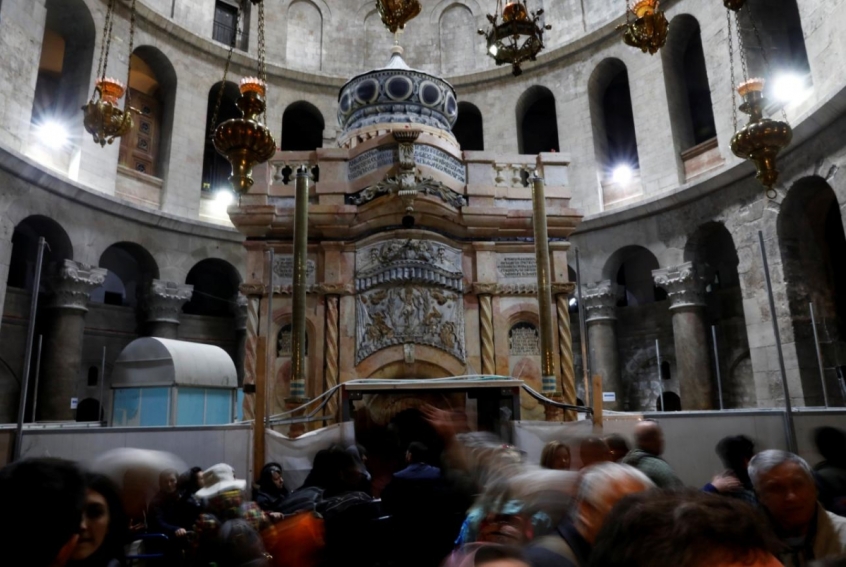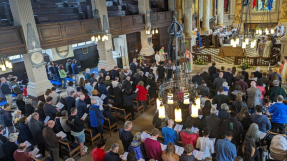
A stone slab believed to be the tomb of Jesus Christ appeared to be leaking blood in footage that was reportedly taken inside the Church of the Holy Sepulchre, one of Christianity's holiest sites in Jerusalem, Israel.
The footage, which went viral last week, claims shows red patches seeping through the stone slab. It has sparked debate among conspiracy theorists, with some expressing their belief about its authenticity and others dismissing it as a fake.
"The leaking blood phenomenon is usually explained by more mundane things," Nigel Watson, author of Haynes UFO Investigations Manual, told the Daily Mail.
"We need scientific evidence to support this rather than some shaky video footage, but for many people it is question of belief rather than examining the facts," he added.
The video was reportedly taken by Galilee resident Nicola Kanaan at the Stone of Anointing, the site believed to be where Jesus' body was prepared for burial. Kanaan claimed she saw "blood leaking from the slab" as she was filming the site.
Watson, however, asserted that the video was actually released four years ago and was recently re-uploaded.
"Either she suddenly travelled back in time to witness this, or she is being untruthful," he told the Daily Mail.
The video has garnered comments from thousands of viewers since its release last week. "The truth is in front of people and they just deny it," one social media user said, according to The Sun.
The tomb, which is housed in a 19th-century shrine called the Aedicule (Edicule), was unveiled for the first time in nearly 500 years in October 2016.
According to the National Geographic, the tomb has been covered in marble since at least 1555 A.D. After removing the marble cladding, a conservation team from the National Technical University of Athens found a layer of fill material and another marble slab with a cross carved into its surface.
Just before the tomb was about to be resealed, scientists discovered that the original limestone burial bed remained intact.
"I'm absolutely amazed. My knees are shaking a little bit because I wasn't expecting this," Fredrik Hiebert, National Geographic's archaeologist-in-residence, said at the time.
"We can't say 100 percent, but it appears to be visible proof that the location of the tomb has not shifted through time, something that scientists and historians have wondered for decades," he added.
While it cannot be confirmed that the Church of the Holy Sepulchre was the site of Jesus' burial, scientists say that no other sites "can lay a claim nearly as weighty" and there is no reason to reject the site's authenticity.













